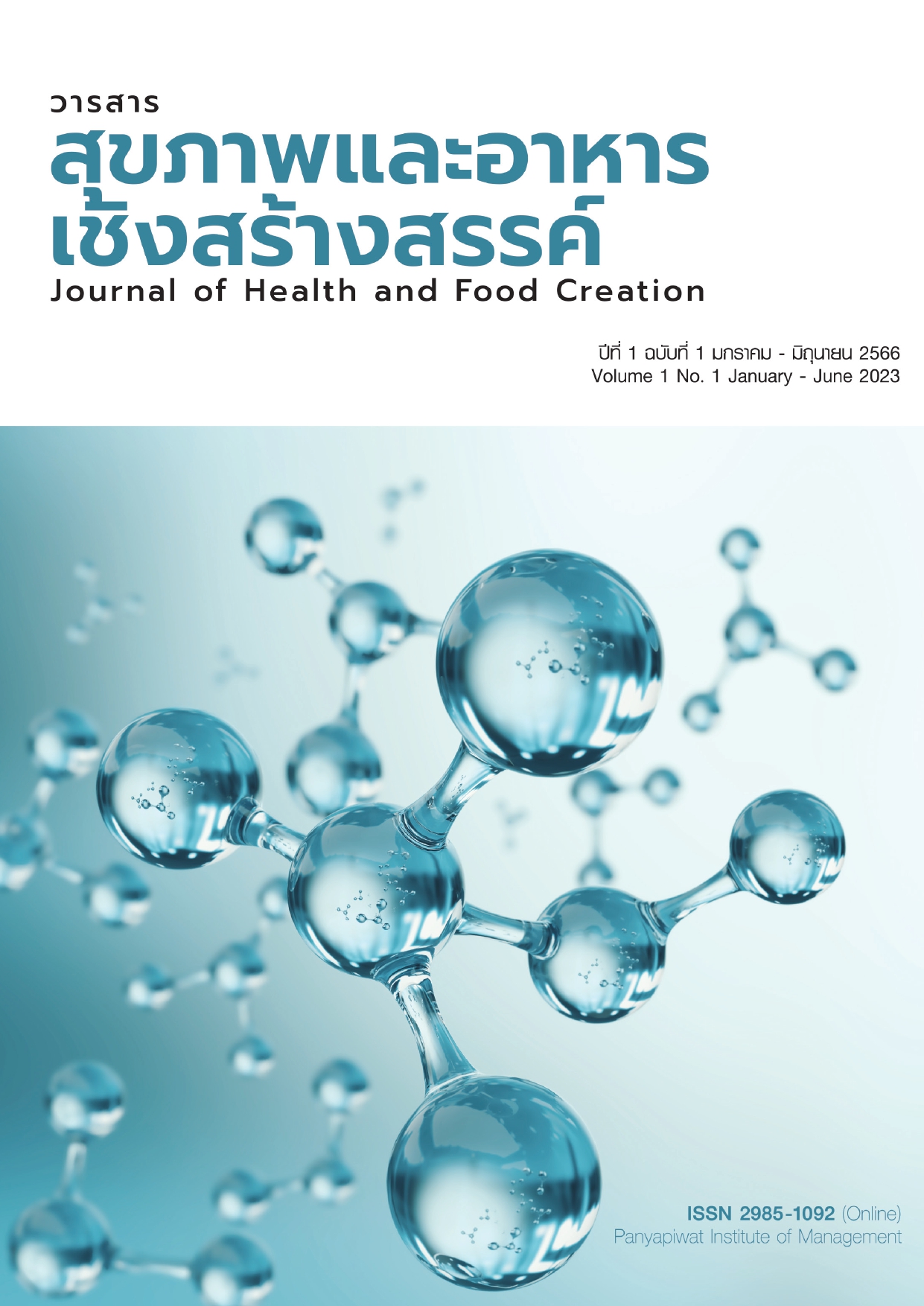บทบาทพยาบาลในการส่งเสริมภาวะโภชนาการของเด็กโรคหัวใจพิการแต่กำเนิดหลังการผ่าตัดหัวใจ
คำสำคัญ:
บทบาทพยาบาล, ภาวะโภชนาการ, เด็กโรคหัวใจพิการแต่กำเนิดบทคัดย่อ
โรคหัวใจพิการแต่กำเนิดเป็นโรคเรื้อรังที่เกิดจากความผิดปกติของโครงสร้างหัวใจหรือหลอดเลือดตั้งแต่แรกเกิด ส่งผลให้การทำงานของหวั ใจผิดปกติ ทารกและเดก็ โรคหัวใจพิการแต่กำเนิด ส่วนใหญ่มีอาการเหนื่อยง่าย เขียว หรือหอบเหนื่อยขณะดูดนม และใช้เวลานานในการดูดนม ทำให้ร่างกายต้องใช้พลังงานจากสารอาหารเพิ่มขึ้น ในขณะที่ความสามารถในการดูดกลืนหรือรับประทานอาหารมีจำกัดจากพยาธิสภาพของโรค โดยเฉพาะในเด็กโรคหัวใจพิการแต่กำเนิดชนิดมีอาการเขียวทำให้พบภาวะขาดสารอาหารได้บ่อย เนื่องจากการมีนํ้าหนักตัวขึ้นน้อยและภาวะขาดสารอาหารเป็นภาวะที่พบได้บ่อยในเด็กโรคหัวใจพิการแต่กำเนิด บทความนี้จึงนำเสนอภาพรวมของโรคหัวใจพิการแต่กำเนิด ภาวะโภชนาการของทารกและเด็กโรคหัวใจพิการแต่กำเนิด ผลกระทบของภาวะขาดสารอาหารต่อภาวะสุขภาพของทารกและเด็กโรคหัวใจพิการแต่กำเนิด และบทบาทพยาบาลในการส่งเสริมภาวะโภชนาการของทารกและเด็กโรคหัวใจพิการแต่กำเนิด ซึ่งเป็นความท้าทายพยาบาลในการดูแลทารกและเด็กโรคหัวใจพิการแต่กำเนิดทั้งในระยะก่อนผ่าตัด ระยะหลังการผ่าตัด รวมถึงการดูแลอย่างต่อเนื่องที่บ้าน
เอกสารอ้างอิง
Abdelmoneim, H. M., Hawary, B. E., & Soliman, A. M. E. (2019). Assessment of nutrition state in children with heart diseases. The Egyptian Journal of Hospital Medicine, 77(2), 5049-5055.
Argent, A. C., Balachandran, R., Vaidyanathan, B., Khan, A., & Kumar, R. K. (2017). Management of undernutrition and failure to thrive in children with congenital heart disease in low-and middle-income countries. Cardiology in the Young, 27(suppl. 6), S22-S30.
Batte, A., Lwabi, P., Lubega, S., Kiguli, S., Otwombi, K., Chimoyi, L., Nabatte, V., & Karamagi, C. (2017). Wasting, underweight and stunting among children with congenital heart disease presenting at Mulago hospital, Uganda. BMC Pediatrics, 17(10), 1-7. http://doi.org/10.1186/s12887-017-0779-y
Bureau of Nutrition, Department of Health. (2021). Growth and development recording and screening program, and early childhood (KidDiary). https://www.kiddiary.in.th/ [in Thai]
Cholkraisuwata, E., Buddharaksaa, Y., & Sayasathidb, J. (2013). Congenital heart disease in elementary school children in rural Thailand: The role of the trained noncardiologist. Asian Biomedicine, 7(2), 287-291. http://doi.org/10.5372/1905-7415.0702.178 [in Thai]
Daymont, C., Neal, A., Prosnitz, A., & Cohen, M. S. (2013). Growth in children with congenital heart disease. Pediatrics, 131(1), e236-e242. http://doi.org/10.1542/peds.2012-1157
El-Ganzoury, M. M., El-Farrash, R. A., Fouad, G., Hassan, S. I., & Barakat, N. M. (2020). Perioperative nutritional prehabilitation in malnourished children with congenital heart disease: A randomized controlled trial. Nutrition, 84(suppl. 3), 111027. https://doi.org/10.1016/j.nut.2020.111027
Gommah, L. H., Elasheer, O. M., & Mohammed, N. A. (2021). Nutritional management in children with congenital heart diseases in Assiut University Children Hospital. Journal of Medical Research and Practice, 6(4), 363-367.
Herridge, J., Tedesco-Bruce, A., Gray, S, & Floh, A. A. (2021). Feeding the child with congenital heart disease: A narrative review. Pediatric Medicine, 4(7), 1-15. http://doi.org/10.21037/pm-20-77
Hockenberry, M. J., Wilson, D., & Rodgers, C. C. (2019). Wong’s: Nursing care of infants and children (11th ed.). Elsevier.
Ong, C., Han, W. M., Wong, J. J-M., & Lee, J. H. (2014). Nutrition biomarkers and clinical outcomes in critically ill children: A critical appraisal of the literature. Clinical Nutrition, 33(2), 191-197.
Oyarzún, I., Claveria, C., Larios, G., & Le Roy, C. (2018). Nutrition recovery after cardiac surgery in children with congenital heart disease. Revista Chilena de Pediatria, 89(1), 24-31.
Parimanon, C., Chaimay, B., & Woradet, S. (2018). Nutritional status and factors associated with nutritional status among children aged under 5 years: Literature review. The Southern College Network Journal of Nursing and Public Health, 5(1), 329-342. [in Thai]
Petruentong, P., Srichantaranit, A., & Prasopkittikun, T. (2018). Growth and development in children with congenital heart disease. Songklanagarind Journal of Nursing, 38(1), 10-21. [in Thai]
Tabib, A., Aryafar, M., & Ghadrdoost, B. (2019). Prevalence of undernutritionin children with congenital heart disease. Journal of Comprehensive Pediatrics, 10(4), e84274. http://dx.doi.org/10.5812/compreped.84274
Wangsawat, T., Jaisomkom, A., Pongjaturawit, Y., Piboonrunroj, P., & Hayeese, W. (2021) Effectiveness of a continuing nutrition care at home program on the growth of children with congenital heart disease in a primary health care unit. Nursing Journal of the Ministry of Public Health, 31(1), 135-147. [in Thai]
Woldesenbet, R., Murugan, R., Mulugeta, F., & Moges, T. (2021). Nutritional status and associated factors among children with congenital heart disease in selected governmental hospitals and cardiac center, Addis Ababa Ethiopia. BMC Pediatrics, 21(1), 538. https://doi.org/10.1186/s12887-021-03023-1
Wu, W., He, J., & Shao, X. (2020). Incidence and mortality trend of congenital heart disease at the global, regional, and national level, 1990-2017. Medicine, 99(23), 1-8.
Zhang, M., Wang, L., Huang, R., Sun, C., Nan Bao, N., & Xu, Z. (2020). Risk factors of malnutrition in Chinese children with congenital heart defect. BMC Pediatrics, 20, 213-219. https://doi.org/10.1186/s12887-020-02124-7
ดาวน์โหลด
เผยแพร่แล้ว
รูปแบบการอ้างอิง
ฉบับ
ประเภทบทความ
สัญญาอนุญาต
ลิขสิทธิ์ (c) 2023 วารสารสุขภาพและอาหารเชิงสร้างสรรค์

อนุญาตภายใต้เงื่อนไข Creative Commons Attribution-NonCommercial-NoDerivatives 4.0 International License.
“ข้าพเจ้าและผู้เขียนร่วม (ถ้ามี) ขอรับรองว่า บทความที่เสนอมานี้ยังไม่เคยได้รับการตีพิมพ์และไม่ได้อยู่ระหว่างกระบวนการพิจารณาลงตีพิมพ์ในวารสารหรือแหล่งเผยแพร่อื่นใด ข้าพเจ้าและผู้เขียนร่วมยอมรับหลักเกณฑ์การพิจารณาต้นฉบับ ทั้งยินยอมให้กองบรรณาธิการมีสิทธิ์พิจารณาและตรวจแก้ต้นฉบับได้ตามที่เห็นสมควร พร้อมนี้ขอมอบลิขสิทธิ์บทความที่ได้รับการตีพิมพ์ให้แก่สถาบันการจัดการปัญญาภิวัฒน์หากมีการฟ้องร้องเรื่องการละเมิดลิขสิทธิ์เกี่ยวกับภาพ กราฟ ข้อความส่วนใดส่วนหนึ่งและ/หรือข้อคิดเห็นที่ปรากฏในบทความข้าพเจ้าและผู้เขียนร่วมยินยอมรับผิดชอบแต่เพียงฝ่ายเดียว”






